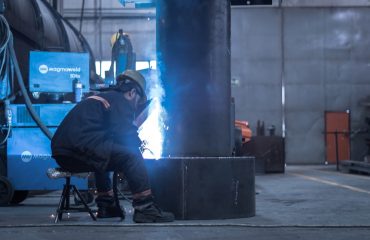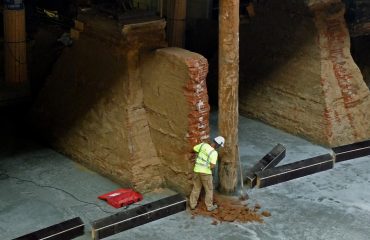The oil and gas industry relies heavily on efficient and robust well construction. At the heart of this process lies the crucial role of casing and tubing – steel pipes that protect the wellbore, control pressure, and facilitate the extraction of hydrocarbons. This comprehensive guide delves into the intricacies of casing and tubing, exploring their functions, types, materials, and importance in the overall success of oil and gas operations.
1. The Vital Role of Casing in Well Construction
Casing is the steel pipe cemented into the wellbore during drilling. Its primary function is to provide structural support to the well, preventing collapse of the surrounding formations. This is particularly crucial in unstable geological formations prone to caving. Furthermore, casing isolates different zones within the well, preventing the mixing of fluids from different formations. This isolation is critical for maintaining well integrity, preventing contamination of freshwater aquifers, and controlling pressure within the well. Different sections of the well may require different casing strings, each designed to withstand specific pressures and conditions.
The process of running and cementing casing is a complex and critical operation, requiring precise engineering calculations and skilled execution. Failures in casing can lead to significant environmental damage, financial losses, and potential safety hazards. Therefore, rigorous quality control measures are implemented throughout the entire process.
2. Understanding Tubing: The Pathway for Hydrocarbon Production
Once the well is drilled and cased, tubing is installed inside the casing. Tubing’s primary purpose is to provide a conduit for the flow of hydrocarbons (oil and gas) from the reservoir to the surface. Unlike casing, which is primarily for wellbore stability and isolation, tubing is optimized for fluid flow. It’s designed to withstand the pressure and temperature conditions within the well, ensuring efficient and uninterrupted production.
Tubing strings can consist of multiple sections, potentially including specialized components such as packers, perforations, and downhole tools. Packers isolate different zones within the tubing, allowing for selective production from specific intervals. Perforations create openings in the casing and cement, allowing hydrocarbons to enter the wellbore. The selection of tubing material and design depends on factors like well depth, pressure, temperature, and the type of hydrocarbon being produced.
3. Materials and Grades: Choosing the Right Steel
Both casing and tubing are primarily made of steel, but different grades are used depending on the specific application. The choice of steel grade is influenced by factors like strength, corrosion resistance, and yield strength. Higher-strength steels are often used in deeper wells or in high-pressure/high-temperature (HPHT) environments. Corrosion resistance is also a crucial factor, particularly in wells producing corrosive fluids.
Common steel grades include various types of carbon steel, chromium-molybdenum steel (chromoly), and other specialized alloys designed to withstand extreme conditions. The selection of the appropriate steel grade is a critical engineering decision that significantly impacts the well’s longevity and production efficiency.
4. Casing and Tubing Design and Specifications
The design and specifications of casing and tubing are crucial for ensuring well integrity and efficient production. These specifications include factors like pipe diameter (OD), wall thickness, grade of steel, and connection type. The diameter determines the flow capacity of the tubing, while the wall thickness determines its strength and pressure resistance. Connection types are designed to ensure a leak-free seal between pipe sections.
Design considerations also involve accounting for potential stresses on the pipe, including pressure, temperature, and external forces. Detailed engineering calculations are performed to ensure that the selected casing and tubing can withstand these stresses throughout the well’s operational life.
5. Maintenance and Inspection: Ensuring Long-Term Well Performance
Regular maintenance and inspection of casing and tubing are essential for ensuring the long-term performance and safety of the well. This includes monitoring pressure, temperature, and flow rates. Regular inspections using advanced technologies like logging tools can identify potential problems, such as corrosion, leaks, or mechanical damage, early on, allowing for timely intervention and preventing costly repairs or well failures.
Proper maintenance practices can significantly extend the operational life of the well and reduce the risk of environmental incidents. This also includes implementing corrosion inhibition strategies and regular downhole inspections.
In conclusion, casing and tubing are fundamental components of oil and gas well construction and production. A thorough understanding of their functions, materials, and design considerations is crucial for the safe, efficient, and environmentally responsible extraction of hydrocarbons. The careful selection and maintenance of these components directly impact the profitability and longevity of oil and gas operations.
Tags: oil and gas, casing, tubing, well construction, drilling, HPHT, petroleum engineering




